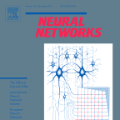Simultaneously detecting hidden solid boundaries and reconstructing flow fields from sparse observations poses a significant inverse challenge in fluid mechanics. This study presents a physics-informed neural network (PINN) framework designed to infer the presence, shape, and motion of static or moving solid boundaries within a flow field. By integrating a body fraction parameter into the governing equations, the model enforces no-slip/no-penetration boundary conditions in solid regions while preserving conservation laws of fluid dynamics. Using partial flow field data, the method simultaneously reconstructs the unknown flow field and infers the body fraction distribution, thereby revealing solid boundaries. The framework is validated across diverse scenarios, including incompressible Navier-Stokes and compressible Euler flows, such as steady flow past a fixed cylinder, an inline oscillating cylinder, and subsonic flow over an airfoil. The results demonstrate accurate detection of hidden boundaries, reconstruction of missing flow data, and estimation of trajectories and velocities of a moving body. Further analysis examines the effects of data sparsity, velocity-only measurements, and noise on inference accuracy. The proposed method exhibits robustness and versatility, highlighting its potential for applications when only limited experimental or numerical data are available.
翻译:暂无翻译




